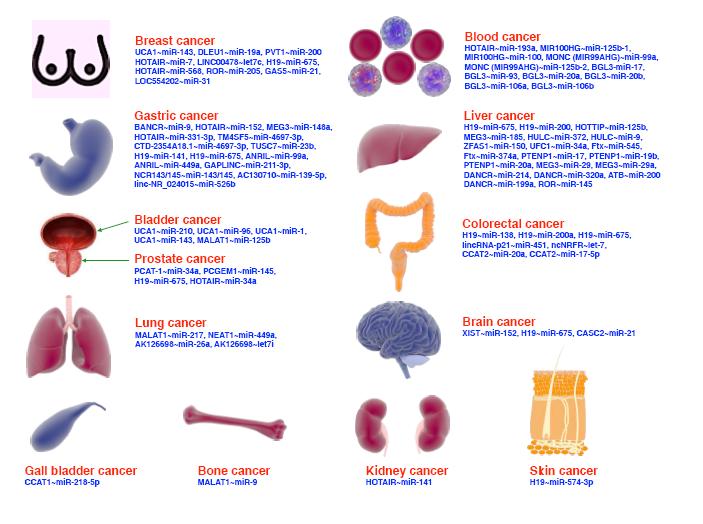| 1. |
Sung H, Ferlay J, Siegel RL, et al. Global cancer statistics 2020: GLOBOCAN estimates of incidence and mortality worldwide for 36 cancers in 185 countries. CA Cancer J Clin, 2021, 71(3): 209-249.
|
| 2. |
Global burden of 369 diseases and injuries in 204 countries and territories, 1990-2019: A systematic analysis for the Global Burden of Disease Study 2019. Lancet, 2020, 396(10258): 1204-1222.
|
| 3. |
Yang D, Bin N, Zhou Z, et al. Demographics and economic burden of nasopharyngeal carcinoma inpatients. Biomed Res Int, 2022, 2022: 6958806.
|
| 4. |
Qi H, Chen W, Zhang C, et al. Epidemiological analysis of 1234 cases of laryngeal cancer in Shanxi Province, China. Cancer Control, 2021, 28: 10732748211041236.
|
| 5. |
Global, regional, and national burden of respiratory tract cancers and associated risk factors from 1990 to 2019: A systematic analysis for the Global Burden of Disease Study 2019. Lancet Respir Med, 2021, 9(9): 1030-1049.
|
| 6. |
胡守财, 陶堰成, 马浩天, 等. 1990~2019年中国非风湿性瓣膜性心脏病疾病负担及变化趋势分析. 中国循环杂志, 2024, 39(8): 806-812.Hu SC, Tao YC, Ma HT, et al. Disease burden and changing trend of non-rheumatic valvular heart disease from 1990 to 2019 in China. Chin Circ J, 2024, 39(8): 806-812.
|
| 7. |
Mild KH, Mattsson MO, Hardell L, et al. Occupational carcinogens: ELF MFs. Environ Health Perspect, 2005, 113(11): A726-A727.
|
| 8. |
Rehman S, Rehman E, Ikram M, et al. Cardiovascular disease (CVD): Assessment, prediction and policy implications. BMC Public Health, 2021, 21(1): 1299.
|
| 9. |
胡守财, 杨成龙, 马浩天, 等. 1990—2019年中国饮酒所致的食管癌疾病负担趋势及男女对比分析. 中国胸心血管外科临床杂志, 2024: 1-8.Hu SC, Yang CL, Ma HT, et al. Trends in Chinese esophageal cancer burden of disease due to high alcohol use and comparative analysis of males and females from 1990 to 2019. Chin J Clin Thorac Cardiovasc Surg, 2024: 1-8.
|
| 10. |
黄俊, 江晶晶, 邵慧娟, 等. 1990—2019年我国酒精性肝病的疾病负担分析. 现代预防医学, 2023, 50(20): 3800-3805,3811.Huang J, Jiang JJ, Shao HJ, et al. Disease burden analysis of alcoholic liver disease in China, 1990-2019. Mod Prev Med, 2023, 50(20): 3800-3805,3811.
|
| 11. |
冷雪, 肖文艳, 郑娟, 等. 1990—2019年中国先天性出生缺陷疾病负担分析. 中国循证医学杂志, 2023, 23(4): 386-390.Leng X, Xiao WY, Zheng J, et al. Disease burden analysis of congenital birth defects in China from 1990 to 2019. Chin J Evid-Based Med, 2023, 23(4): 386-390.
|
| 12. |
Song Y, Cheng W, Li H, et al. The global, regional, national burden of nasopharyngeal cancer and its attributable risk factors (1990-2019) and predictions to 2035. Cancer Med, 2022, 11(22): 4310-4320.
|
| 13. |
Zhang R, He Y, Wei B, et al. Nasopharyngeal carcinoma burden and its attributable risk factors in China: Estimates and forecasts from 1990 to 2050. Int J Environ Res Public Health, 2023, 20(4): 2926.
|
| 14. |
Bray F, Laversanne M, Sung H, et al. Global cancer statistics 2022: GLOBOCAN estimates of incidence and mortality worldwide for 36 cancers in 185 countries. CA Cancer J Clin, 2024, 74(3): 229-263.
|
| 15. |
Frick C, Rumgay H, Vignat J, et al. Quantitative estimates of preventable and treatable deaths from 36 cancers worldwide: A population-based study. Lancet Glob Health, 2023, 11(11): e1700-e1712.
|
| 16. |
Catelan D, Biggeri A, Bucchi L, et al. Epidemiologic transition of lung cancer mortality in Italy by sex, province of residence and birth cohort (1920-1929 to 1960-1969). Int J Cancer, 2023, 153(10): 1746-1757.
|
| 17. |
Hansen MS, Licaj I, Braaten T, et al. Smoking related lung cancer mortality by education and sex in Norway. BMC Cancer, 2019, 19(1): 1132.
|
| 18. |
Guo L, Zhu C, Cai L, et al. Global burden of lung cancer in 2022 and projected burden in 2050. Chin Med J (Engl), 2024, 137(21): 2577-2582.
|
| 19. |
Desjardin JT, Chikwe J, Hahn RT, et al. Sex differences and similarities in valvular heart disease. Circ Res, 2022, 130(4): 455-473.
|
| 20. |
Jin EH, Han K, Shin CM, et al. Sex and tumor-site differences in the association of alcohol intake with the risk of early-onset colorectal cancer. J Clin Oncol, 2023, 41(22): 3816-3825.
|
| 21. |
Li S, Chen H, Man J, et al. Changing trends in the disease burden of esophageal cancer in China from 1990 to 2017 and its predicted level in 25 years. Cancer Med, 2021, 10(5): 1889-1899.
|
| 22. |
Barta JA, Zinner RG, Unger M. Lung cancer in the older patient. Clin Geriatr Med, 2017, 33(4): 563-577.
|
| 23. |
Pinsky PF, Gierada DS, Hocking W, et al. National lung screening trial findings by age: Medicare-eligible versus under-65 population. Ann Intern Med, 2014, 161(9): 627-633.
|
| 24. |
Yu G, Gong X, Xu Y, et al. The global burden and trends of four major types of heart disease, 1990-2019: A systematic analysis for the Global Burden of Disease Study 2019. Public Health, 2023, 220: 1-9.
|
| 25. |
Turner MC, Andersen ZJ, Baccarelli A, et al. Outdoor air pollution and cancer: An overview of the current evidence and public health recommendations. CA Cancer J Clin, 2020. [Epub ahead of print].
|

 1/5
1/5
